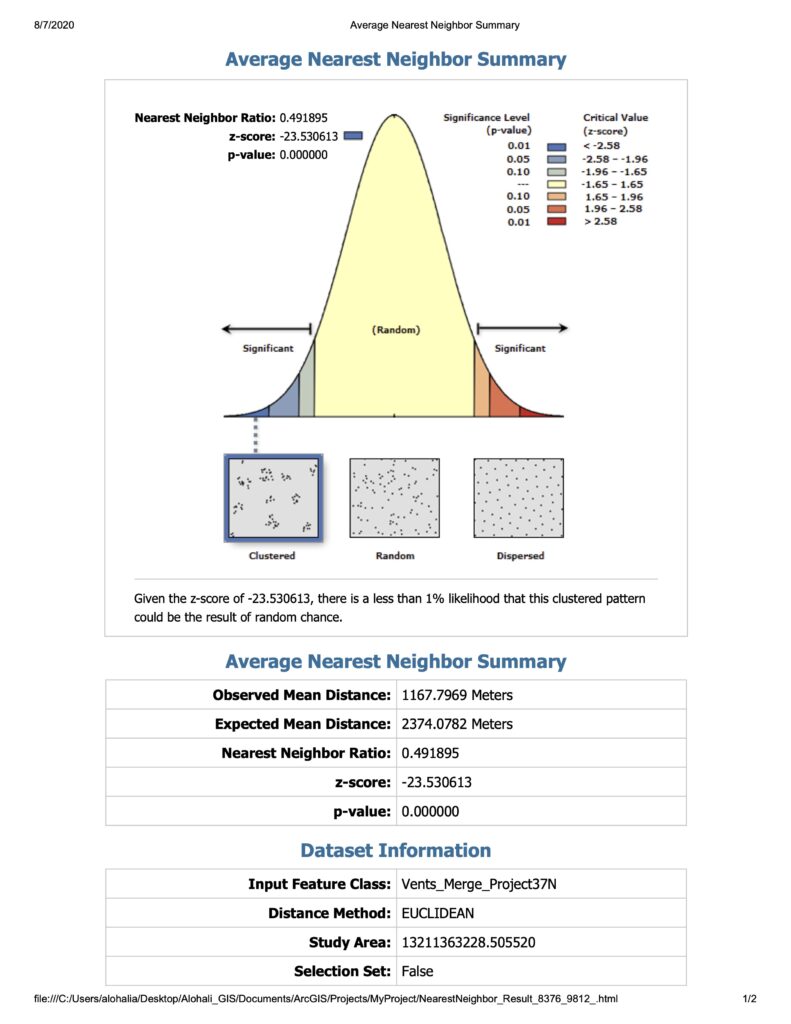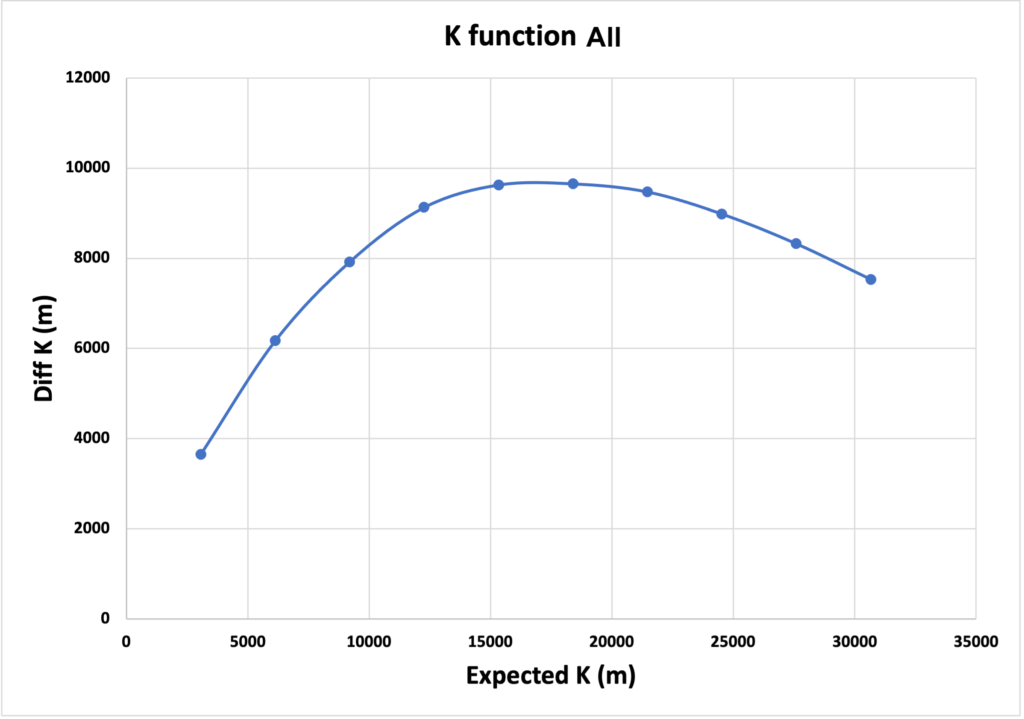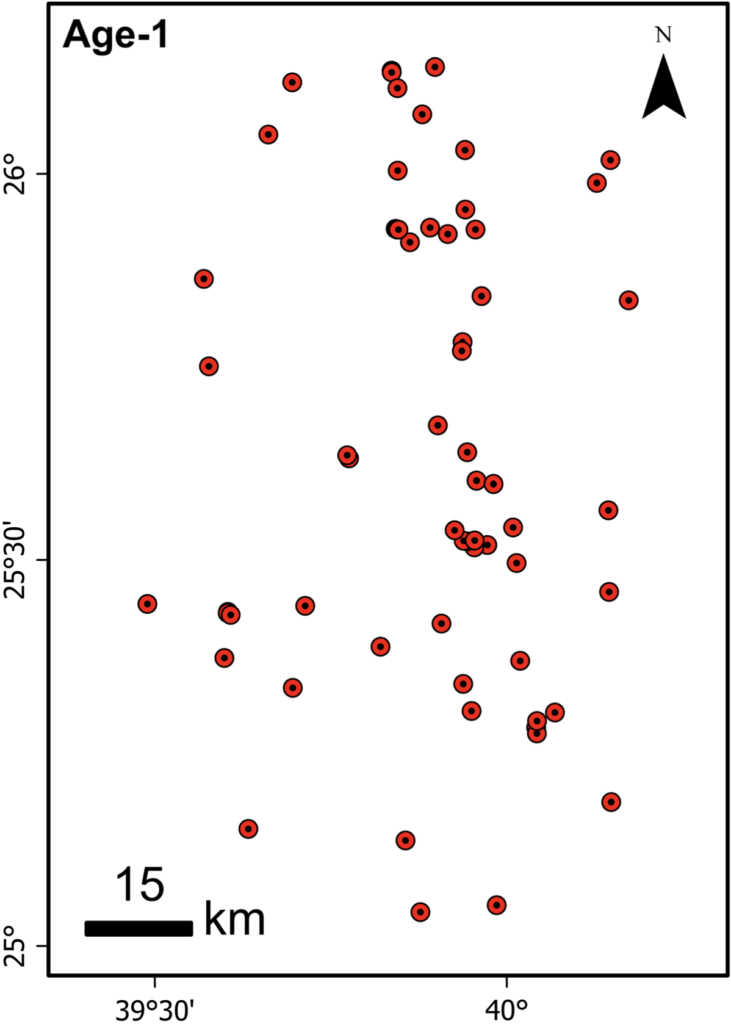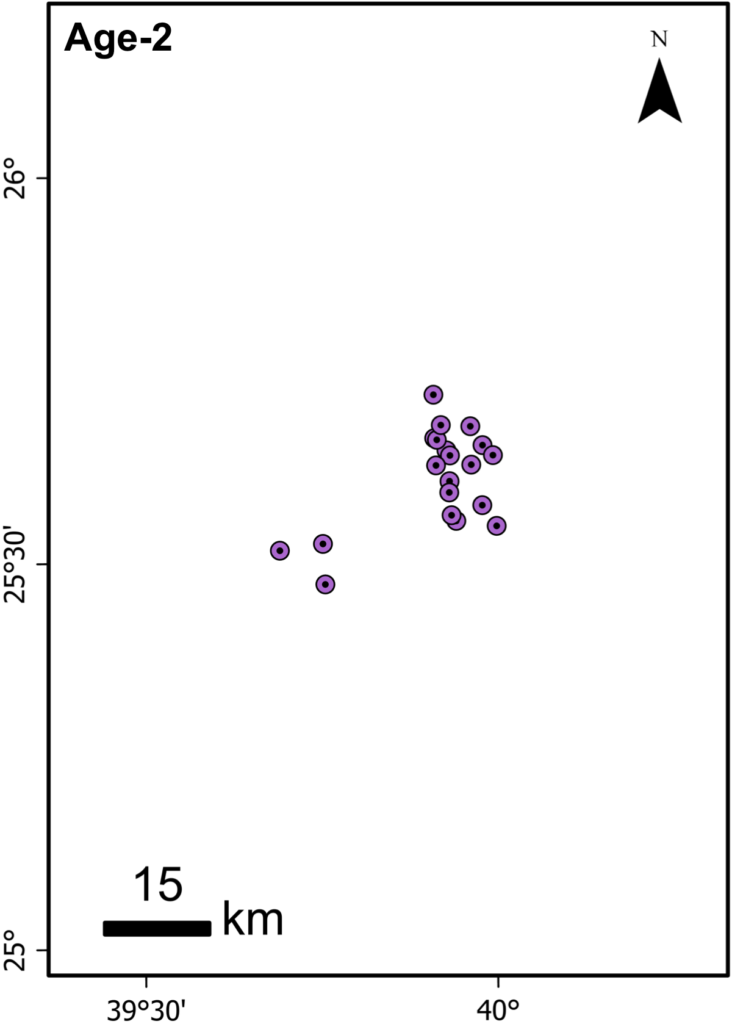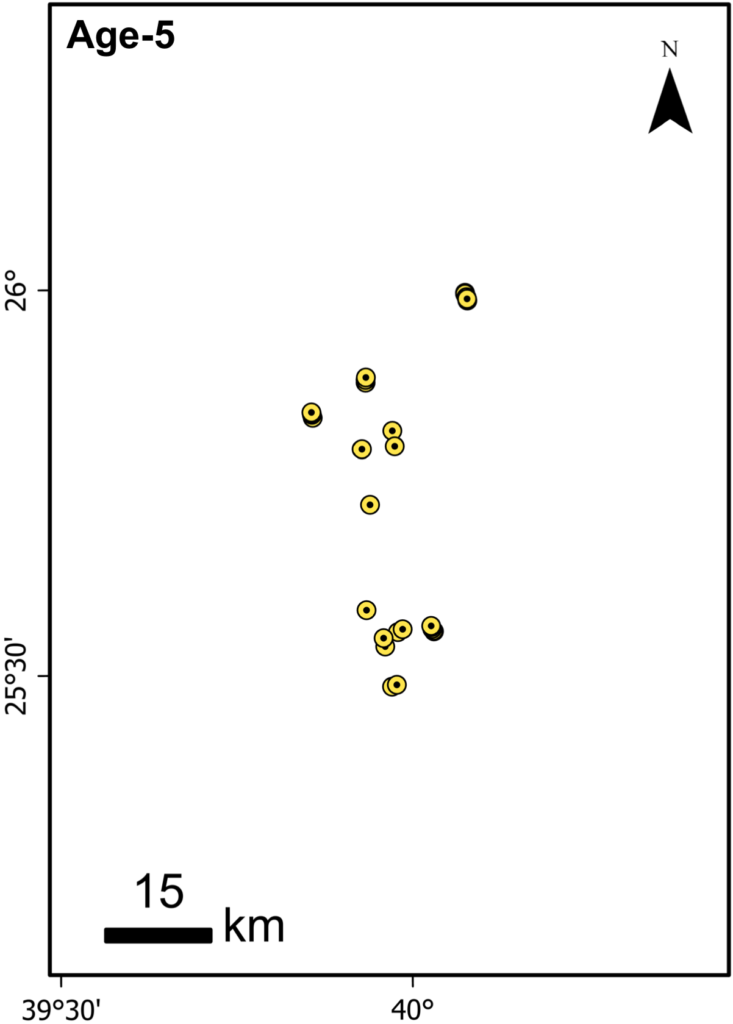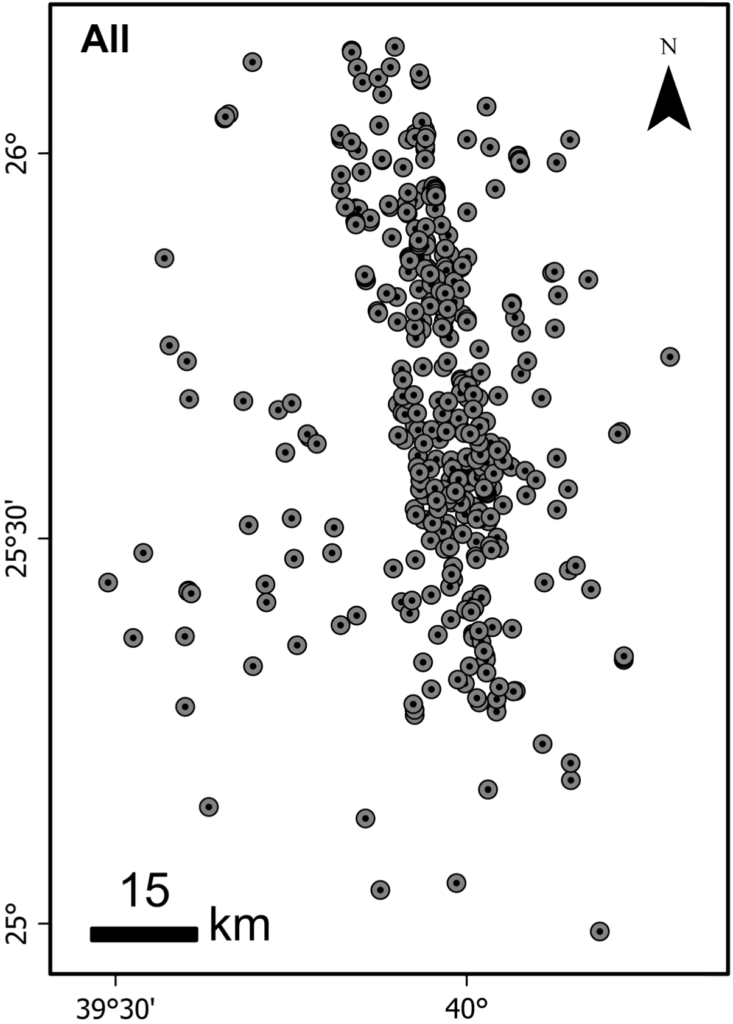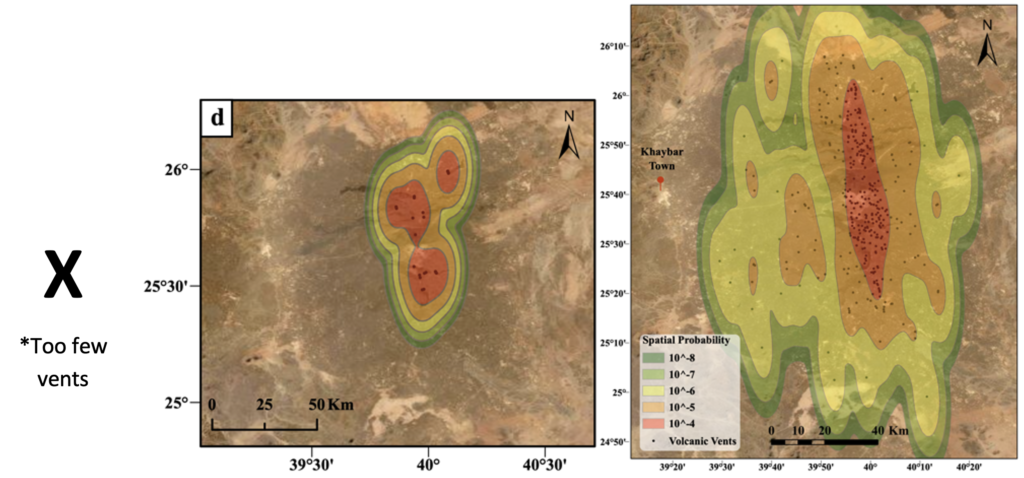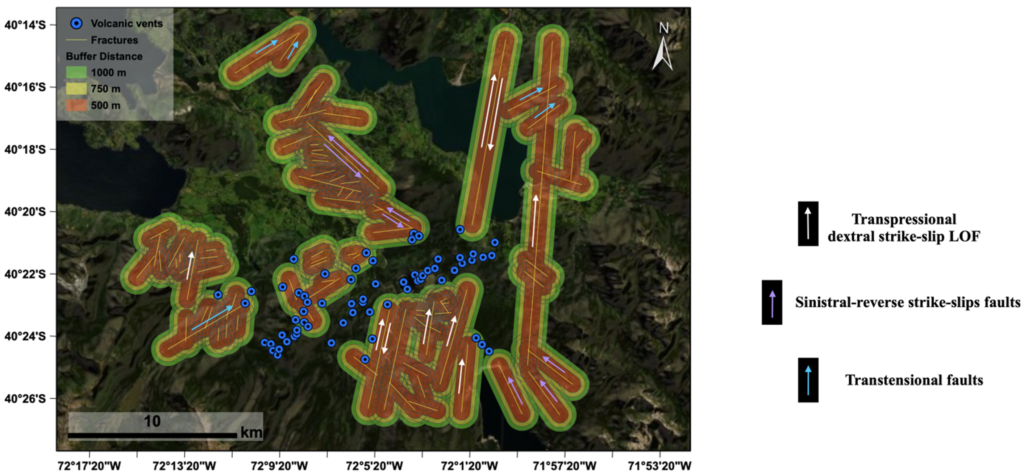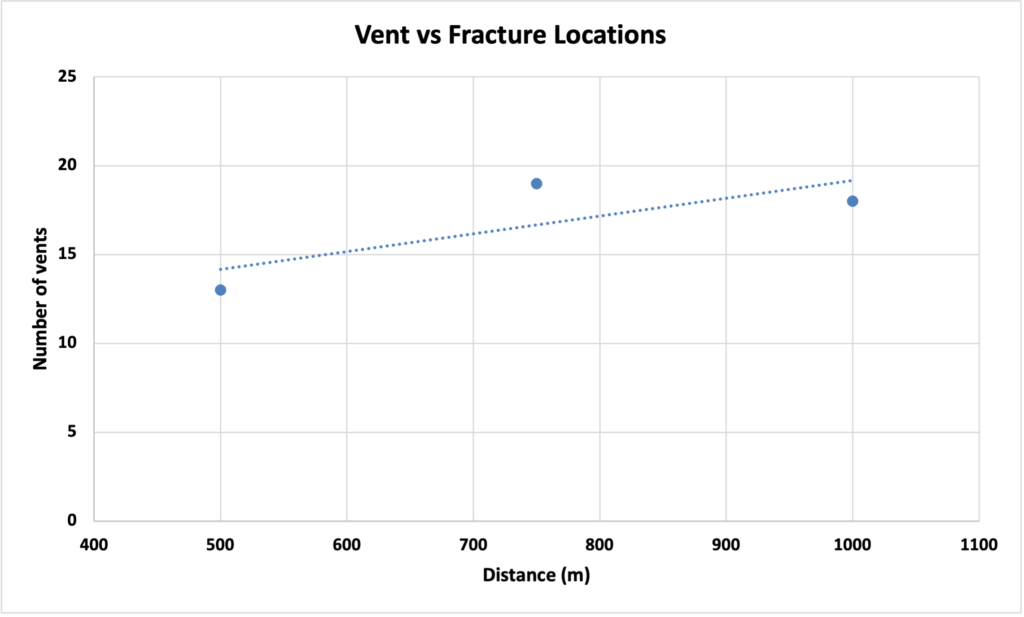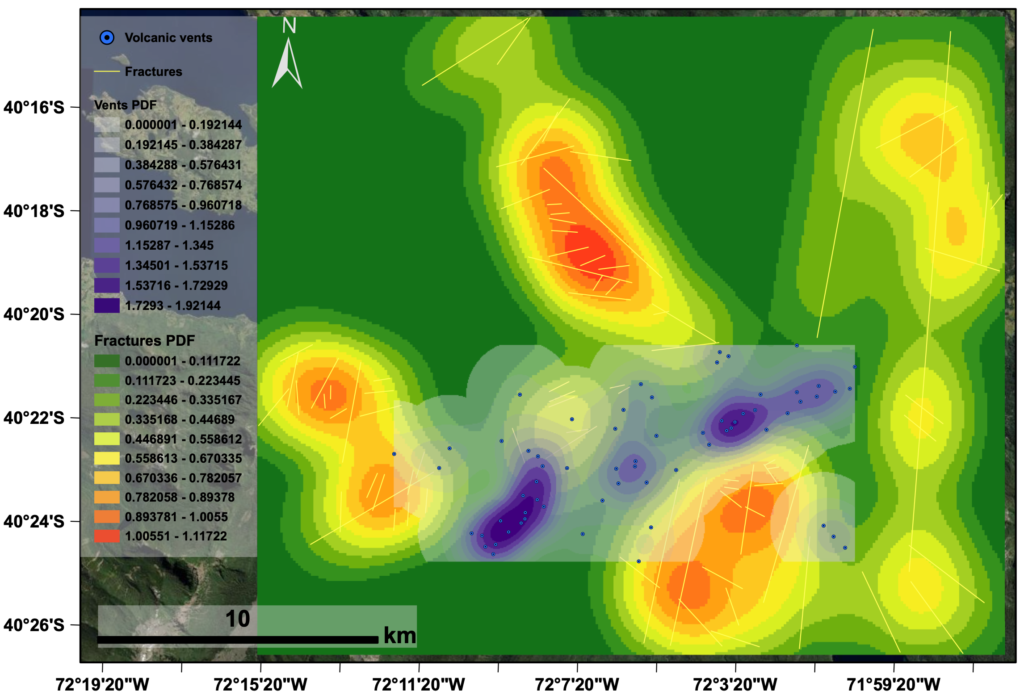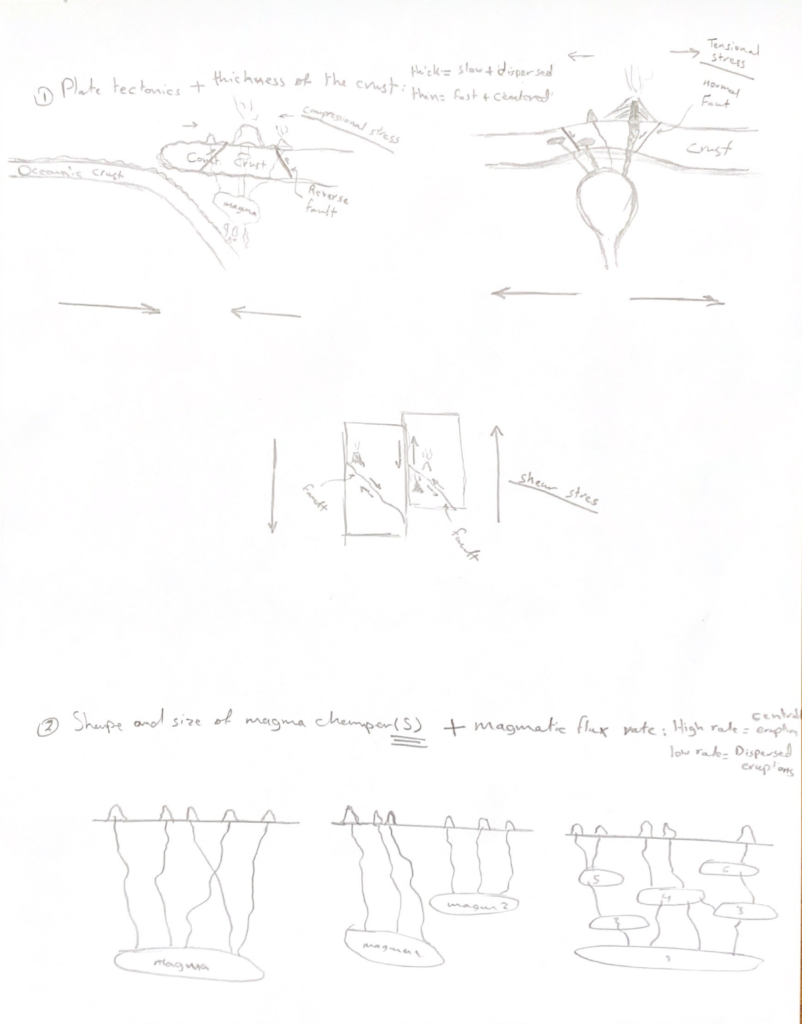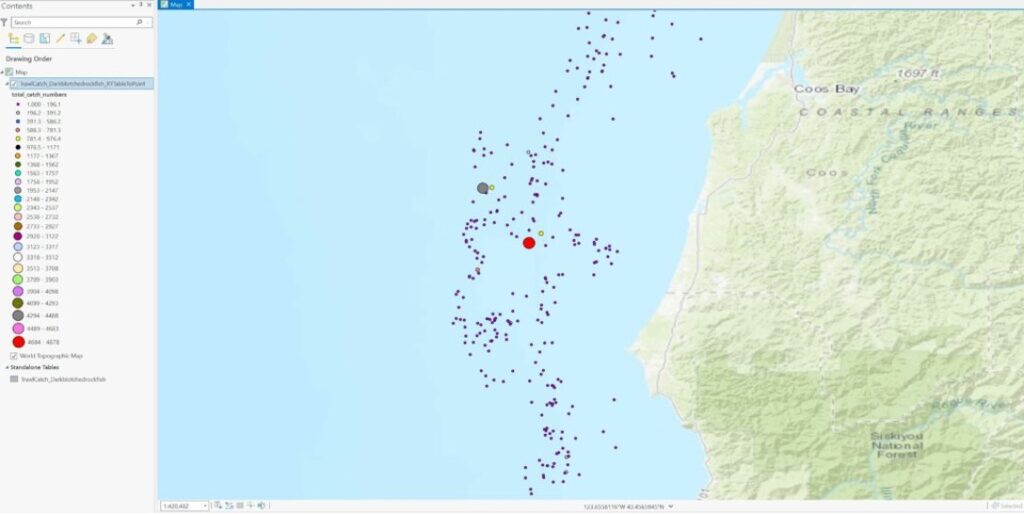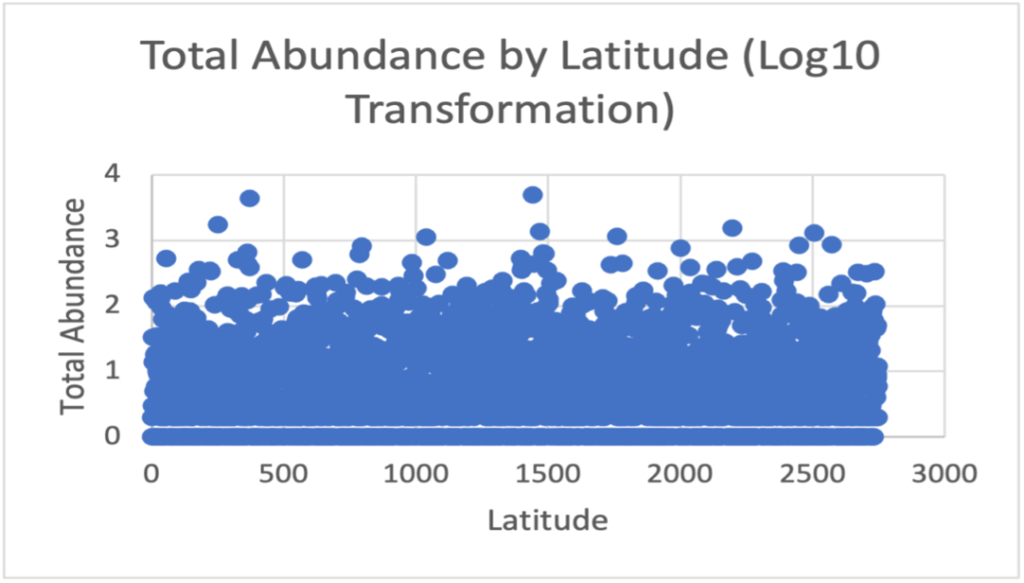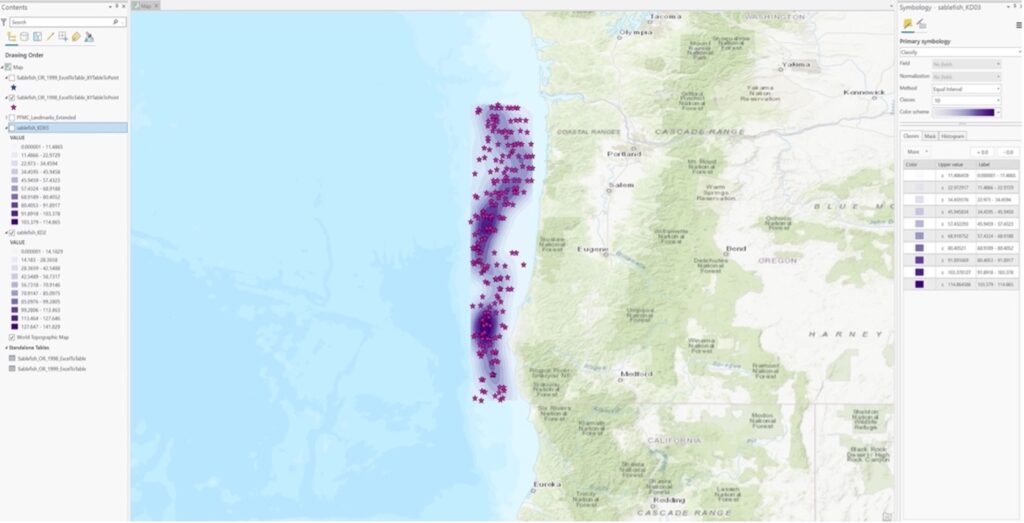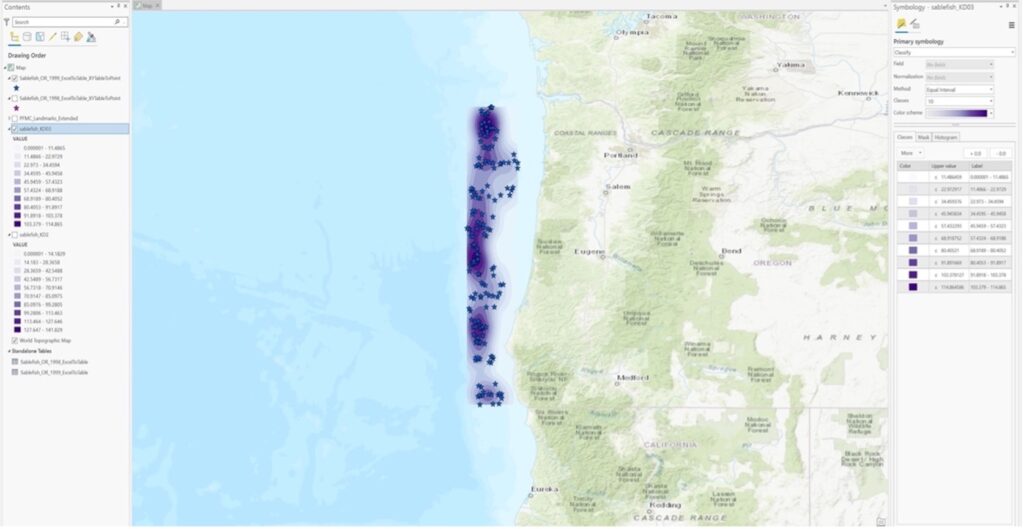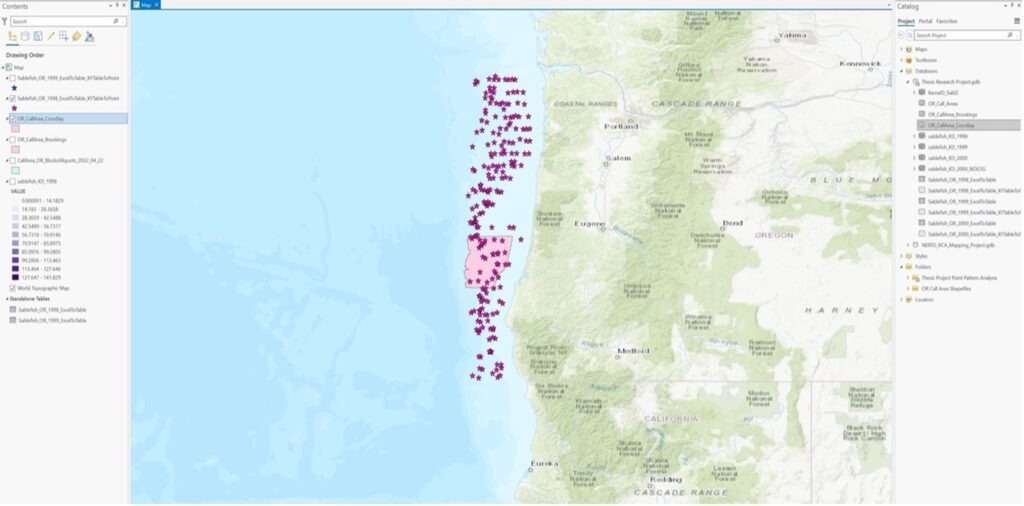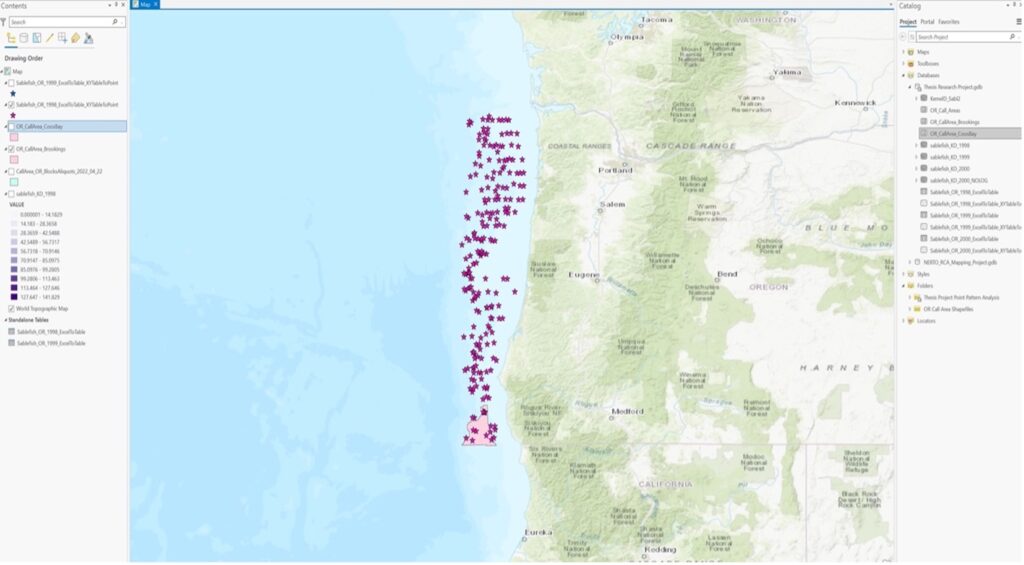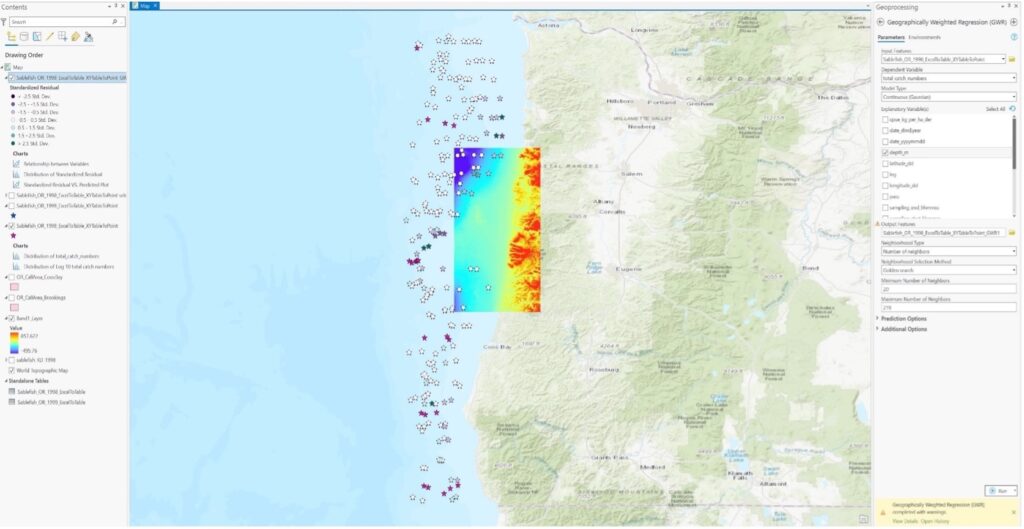
Background: Climate change is predicted to influence the upwelling and ecological conditions in the North Pacific Ocean (Tynan et al., 2005). Predictive ocean-atmosphere general circulation models of the area are showing a northward shift of seasonal cycles with a decrease of phytoplankton productivity in the spring and an increase in the winter (Peirce, 2004). A marine heat wave with extreme warm water anomalies in the Northern California Current during 2014-2016 caused unique zooplankton community in the region that had not been recorded previously (Peterson et al., 2017). Such shifts in zooplankton biomass could impact prey availability and migratory patterns of large cetaceans, such as fin whales.
Fin whales are an endangered species, primarily due to extreme hunting pressure during the age of whaling. While the population has recovered slightly, the population in the northeast Pacific faces threats from increasing anthropogenic activity. Thus, research on fin whale population trends and distribution patterns is needed to assess impacts and inform regulatory decisions to improve population management in the NE Pacific. Environmental drivers of fin whales as they relate to space and time to behaviors such as breeding cycles and spatial memory are essential to providing proper habitat management (Scales et al., 2017).
The eastern North Pacific along the coast of Oregon and Washington experiences seasonal upwelling of colder, nutrient-rich low layers of ocean waters which drives environmental richness and biodiversity. This heavy productivity invites marine mammals close to the coast, including fin whales. Recent studies suggest that breaking ice caps are signaling fin whales to move northward earlier in the Spring, meaning that fin whale presence in the North Pacific could be changing with increasing temperature (Ramp et al., 2015). The far northern areas of the Pacific are not as overfished as others, thus providing a more lucrative and biodiverse foraging ground for large baleen whales (Litzgow et al., 2014). There are no current holistic fin whale population assessments for the North Pacific (Miksis-Olds et al., 2019). Sporadic and indeterminable geographical seasonal patterns of fin whales suggest the species might not engage in the same migration patterns as other large baleen whales (Oleson et al., 2014).
Research question: How is fin whale presence related to environmental characteristics, such as sea surface temperature, as upwelling causes characteristics to change?
How does fin whale distribution from 2018-2021 in the NE Pacific relate to the environmental drivers, such as sea surface temperature, that are subject to change with shifts in upwelling? Upwelling influences sea surface temperature and provides nutrients which produce chlorophyll, and hence zooplankton. Fin whales seek zooplankton, therefore, A = fin whales are related to B=zooplankton as it is affected by C=upwelling.
Data: The data from my analysis was derived from multiple sources. Fin whale observational sightings data points from 2018-2021 were provided in spreadsheets from the Geospatial Ecology of Marine Megafauna lab, Marine Mammal Institute, OSU. This sightings data was collected via both helicopter surveys, ship-based line transects surveys, citizen reported sightings data and coast guard reports. The sea surface temperature will be collected as satellite raster data from a government run website to be determined based on product quality.
Hypothesis 1: Decreased sea surface temperature (SST) off the U.S. Pacific NW coast increases the likelihood of fin whale observations.
Hypothesis 2: Increased chlorophyll concentration off the U.S. Pacific NW coast increases the likelihood of fin whale observations.
Analysis approach: Using the fin whale sightings data, I aimed to organize yearly sightings and compare those aggregations of fin whale location (lat/long coordinates) to the mean sea surface temperature and the mean chlorophyll concentration for each year, 2018-2021.
After acquiring satellite raster data of the environmental variables (B), I will analyze the concentrated or variable presence for B in the matching years (2019, 2020, and 2021). If there is a relatively constant presence or consistent SST, I will derive rasters calculating the mean concentration and SST for the year and attempt to autocorrelated the points to these rasters. If there appears to be a significant change in either SST or chlorophyll concentration over the course of each year, then I will split out the rasters by season (or whatever appears to make sense relative to the change in concentration or SST).
Expected outcomes: I intended to develop both plotted graphs, as well as maps. The spatial pattern if fin whales will vary based on the environmental characteristics. However, fin whale presence could also be determined by a multitude of variables, to include proximity to anthropogenic noise pollution. These spatial patterns can affect prey density and the likelihood of interaction with other conspecifics, meaning that aggregation for prey could lead to the benefits of reproduction.
Results: Parsing the points out by year gave me a clearer visual product moving forward with the analysis. Fin whales appear to favor one spot off the Oregon coast for multiple years. As shown in the follow figures, I conducted point pattern analysis and then proceeded focusing on year 2020 using both nearest neighbor and Ripley’s K methods to find that the data for this year was clustered. According to the kernel density analysis, there is one hotspot that appears to have a near-close hotspot to what we see in other years of data. NASA raster data along the Northern California compared to the 2020 fin whale observation points appears to show all points correlated to one temperature range, suggesting that fin whale distribution is dependent on SST.



How do the fin whale data points vary each year when Kernel Density Analysis is applied?…





Significance: Fin whale are endangered species and opportunistic records indicate that they reside in the NE Pacific. Stakeholders, fishermen, the public, shipping industries, and government operations would benefit to know more about predictive fin whale behaviors and their potential for negative interaction. Noise pollution and ship strikes from anthropogenic activity pose a threat the livelihood of crucial actors of biodiversity, such as fin whales. The more these endangered species are depleted, the more the health of the ocean’s productivity will suffer, meaning less resources for humans as well.
Future Techniques: Moving forward, learning how to display multiple environmental characteristics in a logistic regression tree to determine the highest likelihood of fin whale presence would be ideal. I hope to also learn how to run many of the tools I used in ArcGIS this term in program R.
Resources:
Litzow, M., Mueter, F., Hobday, A. 2014. Reassessing regime shifts in the North Pacific: incremental climate change and commercial fishing are necessary for explaining decadal-scale biological variability. Global Change Biology, doi:10.1111/gcb.12373.
Miksis-Olds, J., Harris, D., Mouw, C. 2019. Interpreting fin whale (Balaenoptera physalus) call behavior in the context of environmental conditions. Aquatic Mammals, 45 (6), 691-705.
Oleson, E., Sirovic, A., Bayless, A., Hildebrand, J. 2014. Synchronous seasonal change in fin whale song in the North Pacific. Plos ONE, 9 (12), e115678.
Peterson, W., Fisher, J., Strub, P., Du, X., Risien, C., Peterson, J., Shaw, C. 2017. The pelagic ecosystem in the Northern California Current off Oregon during the 2014-2016 warm anomalies within the context of the past 20 years. Journal of Geophysical Research: Oceans, 122, 7267-7290.
Pierce, D. 2004. Future changes in biological activity in the North Pacific die to anthropogenic forcing of the physical environment. Climatic Change, 62, 389-418.
Ramp. C., Delarue, J., Palsboll, P., Sears, R., Hammond, P. 2014. Adapting to warmer ocean – Seasonal shift of baleen whale movements over three decades. PloS ONE, 10 (3): e0121374.
Scales, K., Schorr, G., Hazen, E., et al. 2017. Should I stay or should I go? Modelling year-round habitat suitability and drivers of residency for fin whales in the California Current. Biodiversity Research, 23, 1204-1215.
Tynan, C.T., Ainley, D.G., Barth, J.A., Cowles, T.J., Pierce, S.D. & Spear, L.B. (2005) Cetacean distributions relative to ocean processes in the northern California Current System. Deep Sea Research Part II: Topical Studies in Oceanography, 52, 145-167.

























































































